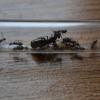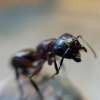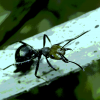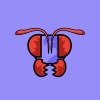I might jump off the Tetra train if my natives were being affected. However, as I said before, there’s a nice balance between them and the natives. There’s simply too many Lasius and Formica completely dominating the area for them to have a chance of total invasion and destruction of the native ecosystem.Am I the only one here that hates Tetramorium immigrans with a passion? They are invasive, generic, and uninteresting. A lot of what fuels my hatred is that they edge out native ants that are really, really cool. Like the Pheidole pilifera-group spp., and many species I'll never know they edge out.
Maybe I'd be on board the Tetra train if they grew faster, but even then it's not substantially faster than some of our natives, and in specific cases, slower than some native ants.
You are not realizing the damage they have caused because they were already established when you started paying attention to them. You don't think it's strange how the only dominant myrmicinae you're finding is the invasive Tetramorium immigrans? I don't know about you, but that would indicate to me that they likely replaced a number of native species that originally filled the niche.
























